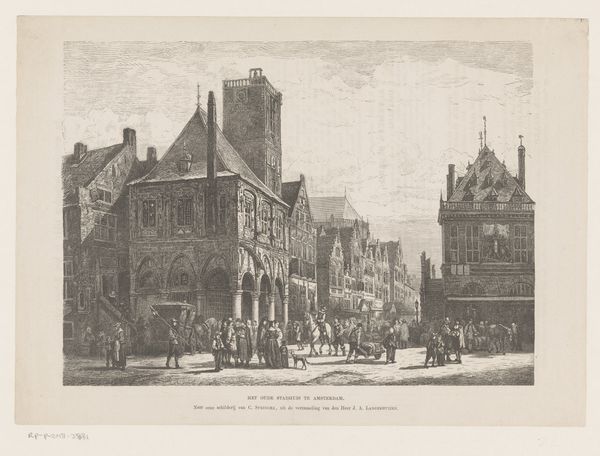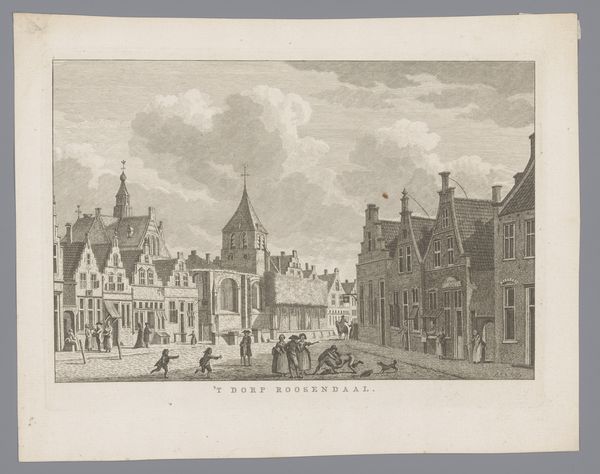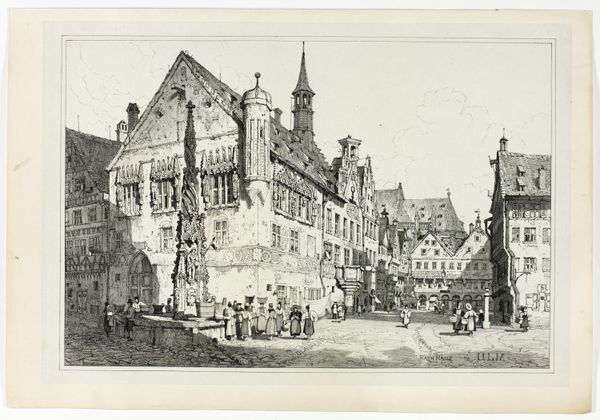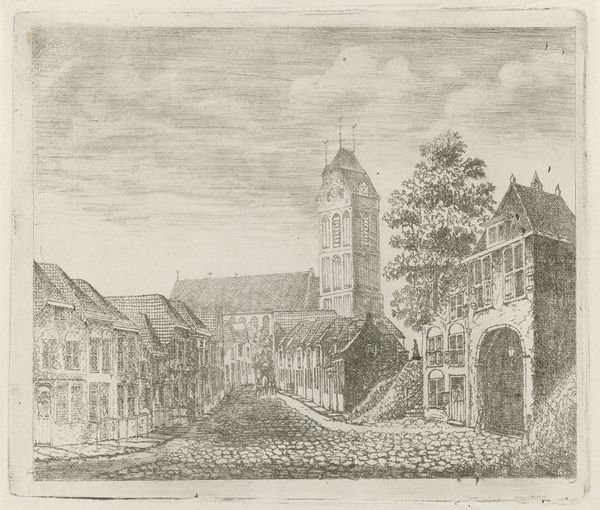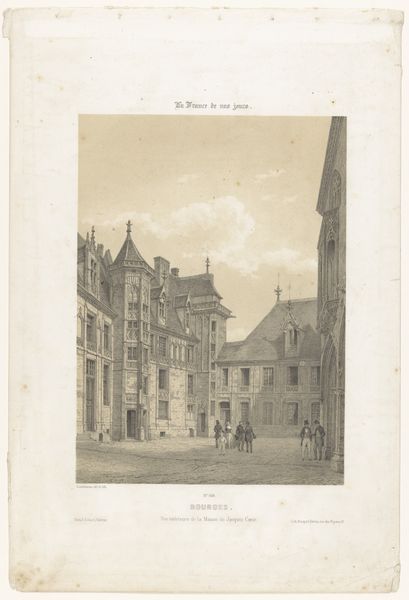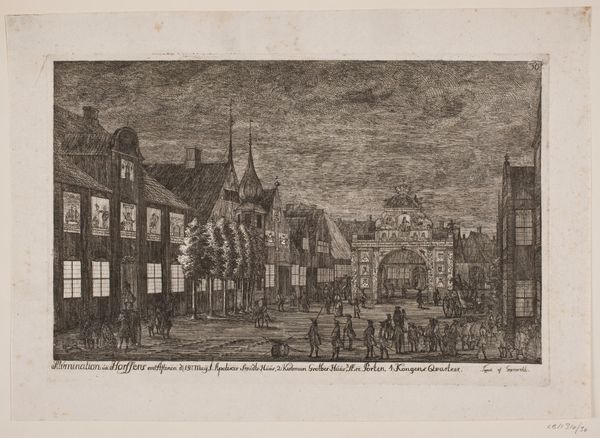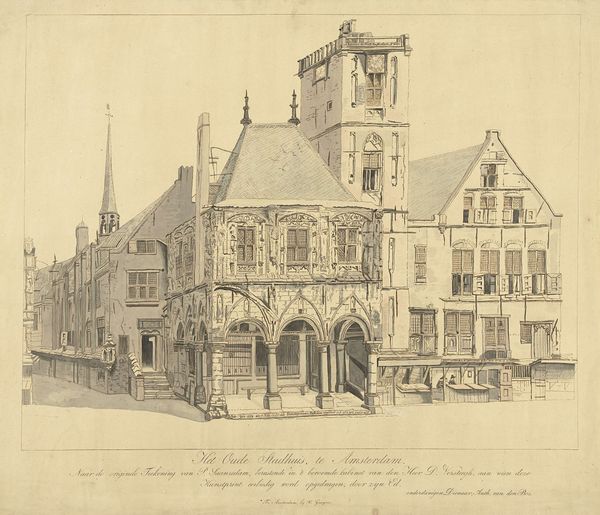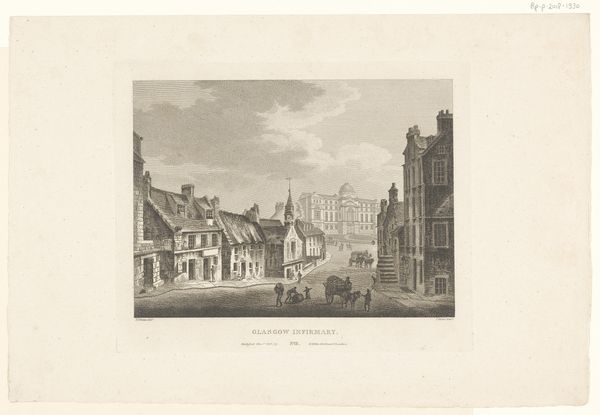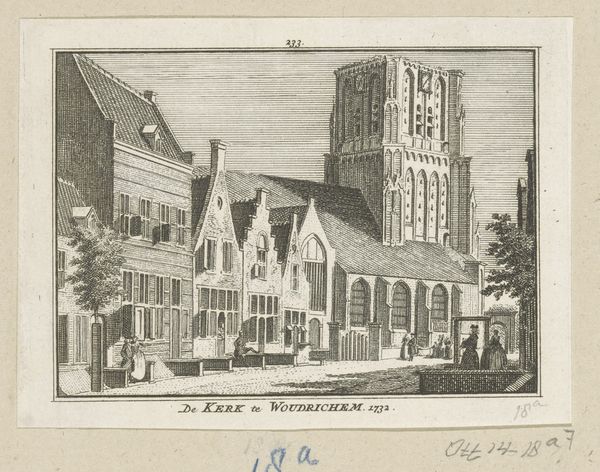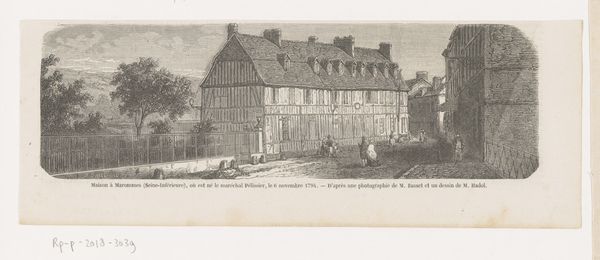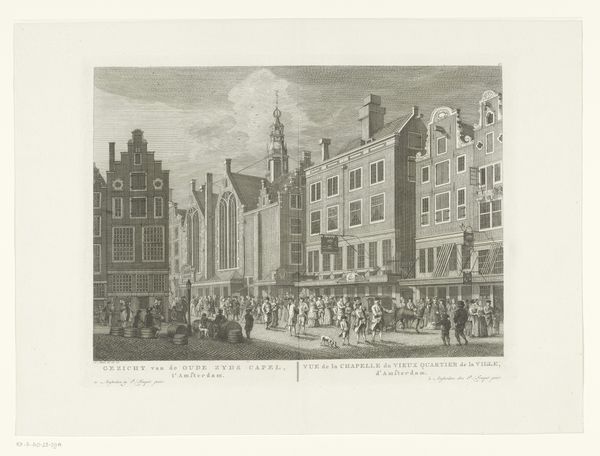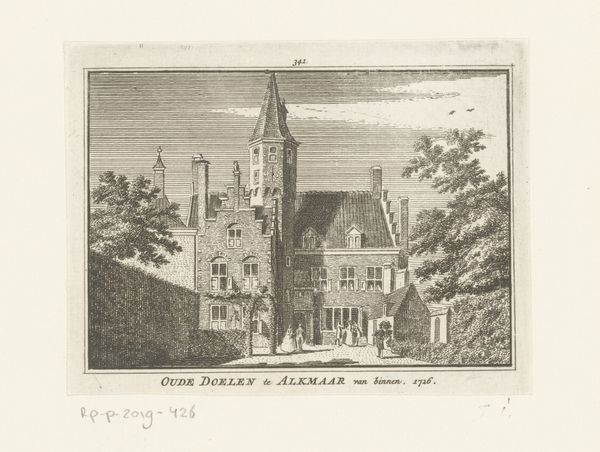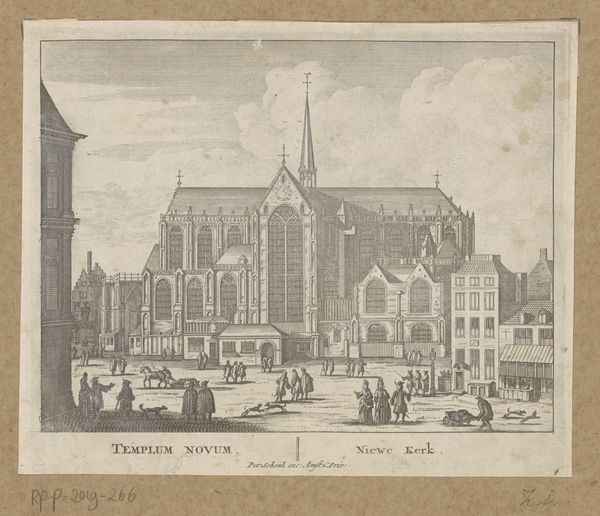
print, engraving, architecture
#
neoclacissism
# print
#
landscape
#
house
#
cityscape
#
genre-painting
#
engraving
#
architecture
Dimensions: height 170 mm, width 238 mm
Copyright: Rijks Museum: Open Domain
This print, made in 1787 by an anonymous artist, captures the ruin of Lucas van Steveninck's house in Middelburg. It was made using etching, a printmaking technique that dates back to the early 16th century. The process starts with a metal plate, usually copper or zinc, covered with a waxy, acid-resistant ground. The artist then scratches an image into the ground with a needle, exposing the metal beneath. The plate is then immersed in acid, which bites into the exposed lines, creating an incised design. Ink is applied to the plate, filling the etched lines, and the surface is wiped clean. Finally, the plate is pressed onto paper, transferring the ink and creating a print. The stark contrast between the lines and the paper creates a dramatic effect. The lines vary in thickness and density to convey texture, shadow, and depth, particularly in the parts of the house that have crumbled away. This etching serves as a historical document, and a commentary on the fragility of human endeavors. It shows how a naturalistic sensibility can be applied to record even the most troubling social circumstances.
Comments
No comments
Be the first to comment and join the conversation on the ultimate creative platform.
